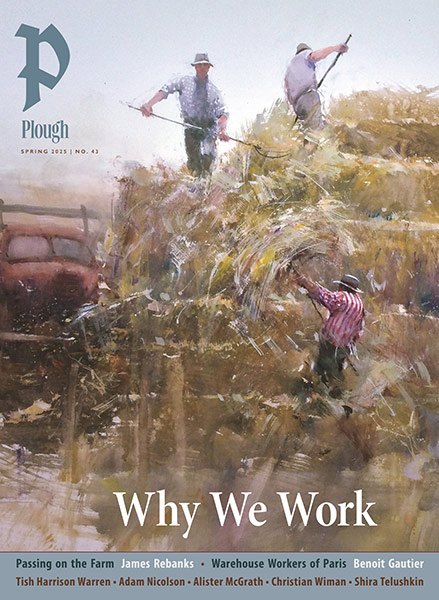Subtotal: $
Checkout-

The Best of Classic Children’s Bibles
-

Purity in a Porn Age
-

Fighting Drought with Trees
-

The Jesus of the Four Gospels
-

Eberhard Arnold’s Unsettling Message
-

Käthe Kollwitz’s Pietà
-

We Are Not Bystanders
-

Alarmed by Jesus
-

Poem: I Cannot Love What You Are
-

Love in a Leper Colony
-

Insights on the Sermon on the Mount
-

The Hard Work of the Gospel
-

The Martyrs of Alcatraz
-

Becoming a People
-

The Dragon and the Coffee Pot
-

Was Bonhoeffer Willing to Kill?
-

Poem: For One Bereaved
-

Digging Deeper: Issue 1
-

Editors’ Picks Issue 1
-

Katharina Hutter
-

Pete Seeger

Next Article:
Explore Other Articles:
The World’s Tallest Kibbutz
Our friends at Kibbutz Mishol live in the largest urban kibbutz in Israel. At eight stories, it’s also the tallest. Established fifteen years ago, Mishol is a community of educators in Upper Nazareth. Sharing their income fully, the community’s eighty adults and fifty children live together in a single building. The neighborhood is a deprived one in the country’s northern periphery.
A decade ago, some commentators announced the end of the kibbutz movement. Since then, new kibbutzim like Mishol are proving them wrong. Stemming from the socialist-Zionist youth movement Hamahanot Ha’olim, whose aim is to “build a just, egalitarian society that lives in peace with its neighbors,” the community has a rich cultural life, choosing to celebrate weekly, yearly, and life-cycle events together. Community practices include decision-making by consensus, communal study, and a car pool.
Where Kibbutz Mishol comes into its own, however, is through the community development work carried out by its members, including through its non-profit, Tikkun. These projects range from mentoring neighborhood children and youth to housing and supporting African refugees as they begin life in Israel.
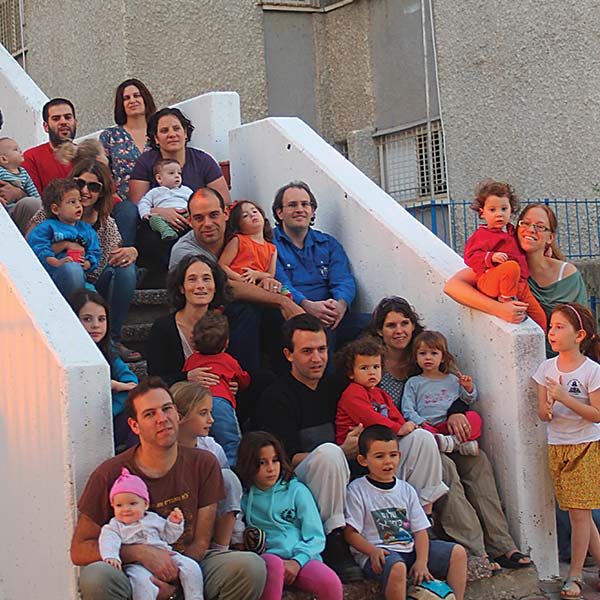 Kibbutz Mishol in Upper Nazareth, Israel; photograph by Anton Mark
Kibbutz Mishol in Upper Nazareth, Israel; photograph by Anton Mark
Already a subscriber? Sign in
Try 3 months of unlimited access. Start your FREE TRIAL today. Cancel anytime.
A Village on the Mountain
Nestled in the mountains two hours to the southeast of Seoul is the small community of Sanimal, which translates to “Village on the Mountain.” The community of thirty-five people is a combination of families and singles who have left the consumer society of South Korea to live a life dedicated to Jesus and his way. Community life in Sanimal began in 2004, although it grew out of the larger Jsari Catholic renewal movement in the diocese of Seoul. Members bring all their possessions to contribute to the building up of God’s kingdom as a reality here on earth. They support themselves through organic farming.
www.sanimal.org
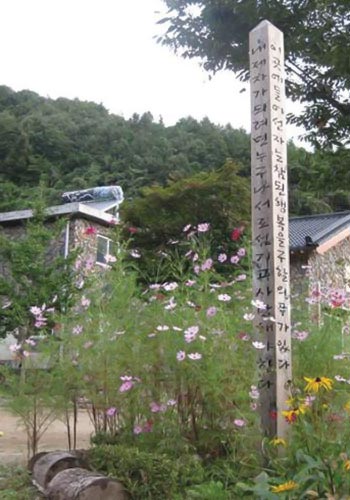 The Sanimal community, South Korea. The inscription on the pillar reads: “If you want to be my followers, you must serve one another.”
The Sanimal community, South Korea. The inscription on the pillar reads: “If you want to be my followers, you must serve one another.”
Already a subscriber? Sign in
Try 3 months of unlimited access. Start your FREE TRIAL today. Cancel anytime.
Rediscovering a Hero of the Intellectual Resistance
Do you know Dietrich von Hildebrand? The SS called him “the architect of the intellectual resistance” to National Socialism in Vienna, and Pope John Paul II called him “one of the great ethicists of the twentieth century.”
An ardent Christian convert, Hildebrand with his unique philosophical voice and compelling personal witness has led generations of students to a fuller and deeper relationship with the God of truth and beauty.
Our friends at the Hildebrand Project are bringing his legacy to contemporary readers with a number of new publications this fall, including new editions of his fundamental philosophical works, Ethics and What is Philosophy?, along with classics such as Purity and Virginity and Liturgy and Personality. And in collaboration with Image Books, they will be releasing the first English translation of Hildebrand’s anti-Nazi papers, He Dared Speak the Truth.
Already a subscriber? Sign in
Try 3 months of unlimited access. Start your FREE TRIAL today. Cancel anytime.
A New Crop of Christian Communities
In many cities from San Diego to Brooklyn, from Vancouver to Orlando, a new generation of Christian intentional communities is springing to life. Sometimes called the New Monasticism, this movement has now been going for at least a decade. How can these communities encourage and help one another grow in their Christ-centered life together? The Nurturing Communities Project (NCP) seeks to fill this need by bringing together both newer and more established groups for learning and inspiration. On the NCP’s behalf, David Janzen, a four-decade veteran of communal living from Reba Place Fellowship, has visited scores of newer communities. He explains: “Christian community is a new yet ancient calling. Our project is about sharing wisdom and building a network of mutual support.”
One fruit of this intergenerational work is Janzen’s book The Intentional Christian Community Handbook (Paraclete, 2012). A few more established communities have offered financial support to the NCP and have taken turns hosting its annual gathering, including last year’s at the Platte Clove Bruderhof. The 2014 gathering will take place at Reba Place Fellowship in Evanston, Illinois on October 10–13.
www.shalommissioncommunities.org
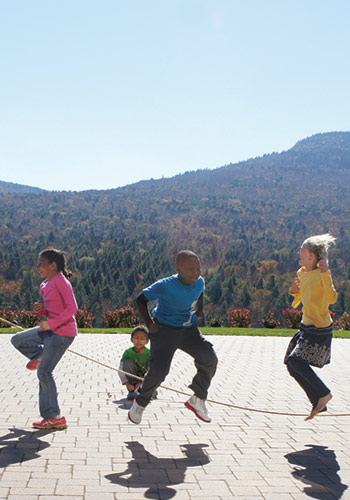 The Nurturing Community Project’s 2013 gathering at the Platte Clove Bruderhof, New York. Photograph by Aaron Paul
The Nurturing Community Project’s 2013 gathering at the Platte Clove Bruderhof, New York. Photograph by Aaron Paul
Already a subscriber? Sign in
Try 3 months of unlimited access. Start your FREE TRIAL today. Cancel anytime.
Ending Hunger through Self-Reliance
Matilda Aba Tibuah was born in Ekurobadze community, part of The Hunger Project’s Taido Epicenter in Ghana. As a small farmer, she was unable to earn enough income for her family due to poor yields. After completing a Hunger Project workshop as well as participating in food security trainings and a microfinance program, Matilda now supports her four children with income from two acres of maize and cassava and a small shop she started.
Matilda is one of many Hunger Project partners in fifteen thousand villages across Africa, South Asia, and Latin America. Her story depicts the Hunger Project’s vision of a world where every woman, man, and child leads a healthy, fulfilling life of self-reliance and dignity. Established in 1977, its approach is built upon the creativity and strength of people and communities who are leading their own change.
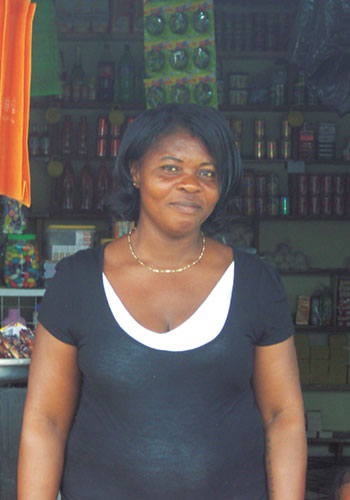 Matilda Aba Tibuah, Ghana: “The Hunger Project brought some confidence into my life that I can do better than I am doing now.” Courtesy of The Hunger Project
Matilda Aba Tibuah, Ghana: “The Hunger Project brought some confidence into my life that I can do better than I am doing now.” Courtesy of The Hunger Project
Already a subscriber? Sign in
Try 3 months of unlimited access. Start your FREE TRIAL today. Cancel anytime.
Already a subscriber? Sign in
Try 3 months of unlimited access. Start your FREE TRIAL today. Cancel anytime.





